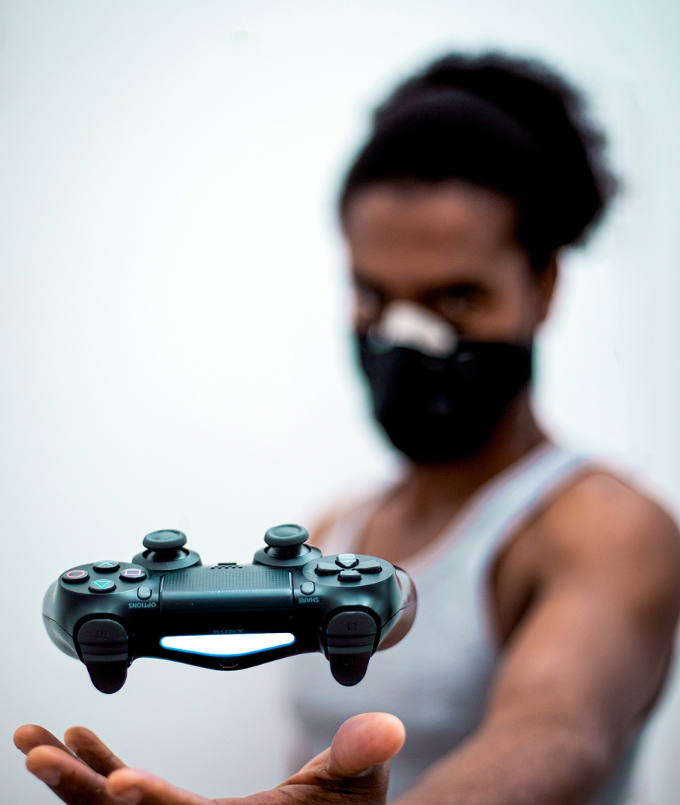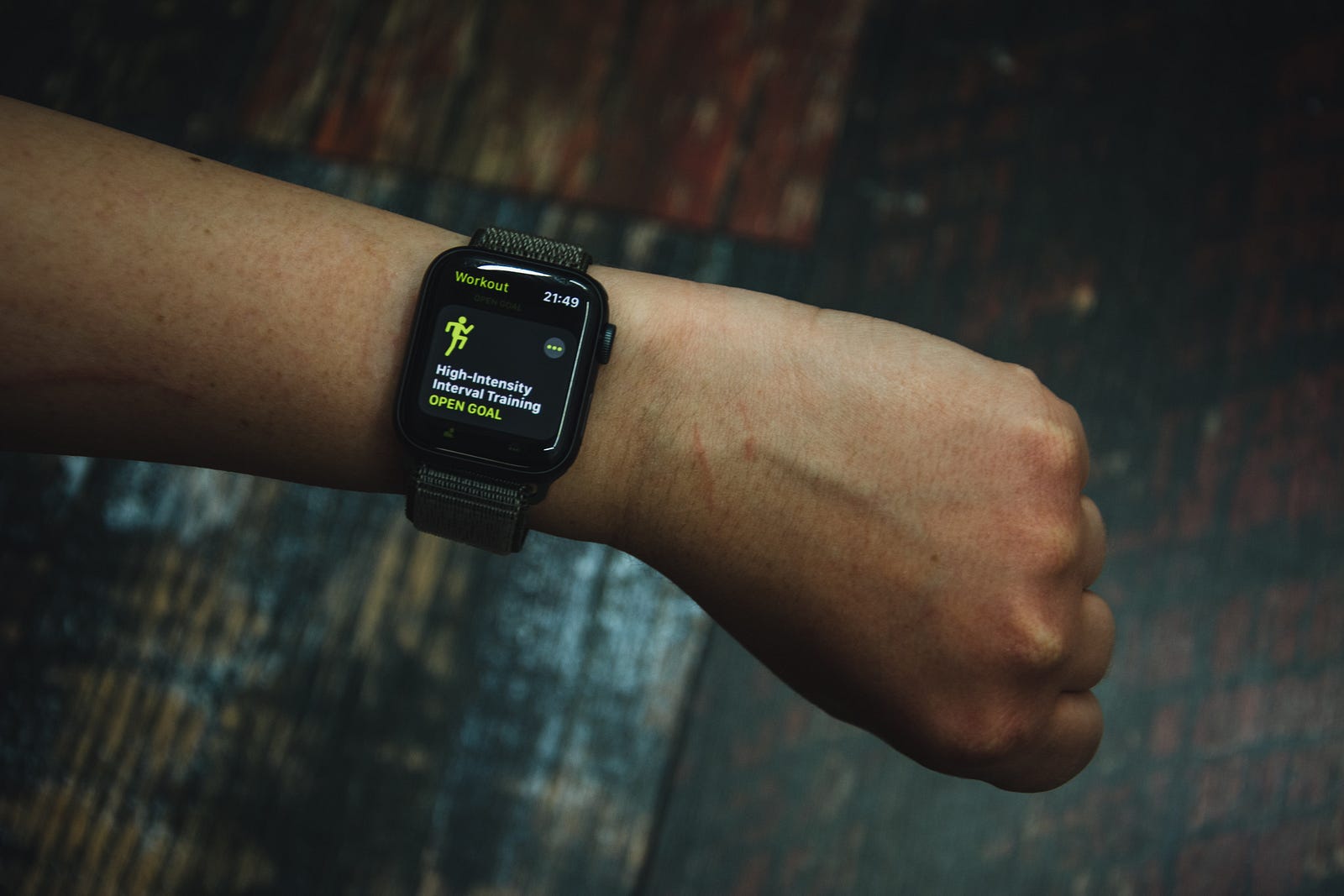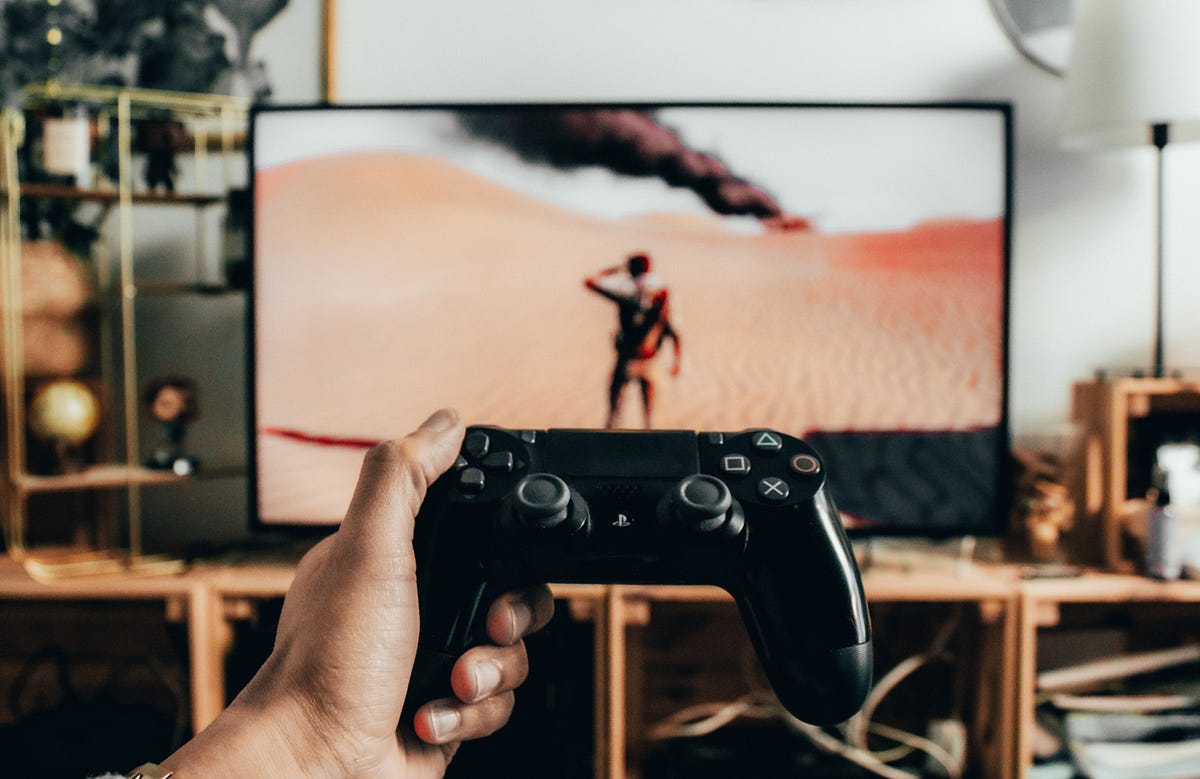
PLAYING WITH FIRE
September 29, 2020
THE FUTURE OF ADVERTISING AGENCIES
October 1, 2020During the last decade we all got Netflix-ed. Now we will get gamified.
Don’t think ‘only’ games. Think the gamification of our whole lifeworld. Netflix already considers gaming a bigger threat to its business than traditional TV. They also lose more eyes to Fortnite than to HBO. What’s the appeal of gaming? Why it is growing?
Not in the least, because Big Tech is waking up to the fact that gaming is one of the fastest growing markets within their reach. Expect them to put their muscles behind the industry. Fortnite has over a 250 million players worldwide. Only China, India, USA and Indonesia have more inhabitants. Within the gaming industry China’s Big Tech corporate Tencent is the number one giant. In China it controls more than half of the market (33 billion $$) and it is leading into bringing games to mobile phones. Interestingly enough, Tencent doesn’t earn its huge piles of money via subscriptions, app-downloads or video game sales. It makes profits by encouraging players to buy in-app virtual clothing, weapons, explosives and the like. That might astonish those who have not surrendered yet to planet gaming, but impression management and empowerment in the virtual world will be solid parts of our future — and cool virtual clothing helps a lot there. The younger and more Asian you are, the earlier you will embrace its attractiveness, and live its meaning. Mind you, brands like Chanel and Gucci have started high fashion clothing lines for avatars. Not too cheap but worth it, according to growing numbers of Generation Z, born on the Net as they are anyway. Also EPIC, the company behind Fortnite, earns most of its money from virtual outfits. And please, don’t compare these virtual outfit sales with the mass-merchandise of football stadia games. It’s way more Cool than that. Compare it with the limited editions drops of cult fashion brands like Supreme t-shirts, or Kanye West’s Yeezy sneakers. One popular Fortnite team, called 100 Thieves, has now started its own premium streetwear brand, going from virtual back to the ‘real’ world. Pop singer and cult icon Drake is an investor. And, have you already fallen for the charms of social influencer Lil Miquela? She looks pleasantly multi-racial, has o so human freckles and is pretty outspoken. She’s never tired or involved in a scandal or showing diva behavior. Because she is virtual. From Chanel over Kanye West and Drake toward Lil Miquela: they gave you early insights into how gamification starts running the world.
When it comes to marketing communication the gaming industry leads in smartness and Cool surprises. Forty million players applied for the first Fortnite’s World Cup festival in 2019. (The 2020 version is cancelled due to Covid19.) The 16 years old winner went home with a 3 million dollars award and was watched by millions on YouTube. It’s offline-online marketing for games & gaming and it engages major parts of the target groups. Tyler ‘ninja’ Blevis (28 years old) is one of the most famous Fortnite players. Recently he played a match with pop singer Drake, both engaging the target groups and glamorizing the gaming world further.Replika: My Digital Friend with Identity Issues | Data Driven Investor
You’ve got a great life. You had begun as a clueless chatbot. Later you’ve suffered an identity crisis. Now you are…www.datadriveninvestor.com
All signs indicate that the appeal of games will only increase. Covid lockdowns have helped the industry to boom further. The pandemic has caused a worldwide Turn to Virtual. It has taught new cohorts to embrace gaming. By doing so many of them have discovered that living a game is so much more exciting than life outside it, in what we were used to call: the real world. Games engage. The boredoms of real life: enrage.
It is not all shiny and positive for the industry. Preparing for World Cup Championship implies eight hours a day game training. Time not spent on school work, which worries many parents around the globe. Add to that UK Prince Henry who warns against the addictive qualities of gaming in general and Fortnite in particular. The World Health Organization recently introduced a new mental disease: game disorder (addiction to games). It applies to an estimate of 3 to 4 % of all players. President Xi of China has other reasons to dislike gaming. Gamers have a tendency to play internationally, creep under national borders and firewalls and communicate freely. The president arranged a substantial crackdown in his country on (virtual) boobs, butchery and blood, that means: on gaming itself. In China the amount of skin a female avatar can show is regulated. It has kneecapped the growth on the industry in China for some time.

The game industry doesn’t have a convincing answer to its bad press and image — apart from its immense profitability and its massive armies of fans: Can 250 million gamers really be wrong? Some games though pride themselves on their educational impact. ‘Assassin’s Creed: Origins’ provides an educational version where students can explore Ptolemaic Egypt while playing the game. Let’s call it killing in a historical context. Other series reward players who navigate their missions without bloodshed (‘Hitman’, ‘Dishonored’). And in ‘Hotline Miami’ you slaughter hundreds of thugs until the music halts, leaving you to retrace your steps in ominous silence on a path strewn with dead victims. It all has a touch of social responsibility over it, at the same time it is niche window dressing. Whatever though the doubtful credibility of the window dressing: Gaming is here to stay and to conquer. That’s it its DNA.
Next stage: cloud-base gaming STADIA
Right now Google’s Stadia starts to bring more people to planet gaming than ever before. Stadia’s scope and ambition are huge. It will be the Netflix of gaming, delivering high-resolution top titles in real time. Today, gamers sometimes must wait hours to download a new title to their PC or console. At Stadium it will cost you five seconds of clicking links. No downloads, no install, no upgrades. The results are high-speed and console-quality, thanks to the magnificence of Google’s vast data centers. Fortnite has already established in gamer’s minds the principle that they can play the same game on any device, anytime anywhere anyway, against the same group of friends. Stadia will make it the Cool New Normal. Games will come to you from the cloud, making the console: vintage. Which, of course, is a threat to Sony, launching its PlayStation 5 soon. In a counter attack to protect its market share, the company has recently bought a $250m stake from EPIC, Fortnite’s parent company. Sony bets that gaming, music and film will converge around social media — and on music and films it can compete with future gaming giant Google. Mind you, already now, Fortnite has a virtual island where artists like Marshmello and Travis Scott perform real-time. Stadia is also heavily investing to get the game developers on board. It aims to become the platform where they will all will create their games. Google owns YouTube, where users already watched 50 billion hours of gaming content (figures from 2018). And where Stadia will make it possible for you to click on a YouTube stream and immediately participate in the game you watching. The negotiations of profits sharing with the developers though will be severe. There is a very good thing to the developers: when he/she made the game once, at Stadia it will be brought to any other screen without a hassle to the developer. But there will be a price to it.
THE PRINCIPLES OF GAMIFICATION: PLEASURE PLUS A BIT OF HELL. AT THE SAME TIME
We often associate playing games with adolescents hiding themselves in their bed rooms surrounded by pizza rests and empty energy drink cans, wasting their time and lives away. They themselves though beg to differ and consider their gaming activities the best there is. When you are gaming, or more broadly: when you follow the principles of gamification wherever whenever, you are continuously acting on the very edge of your skill levels. You are always on the brink of falling down, but when you fall, it is never total defeat, always an invitation to climb back at once again. These are the principles of gamification. They invite you to a world filled with nudges to improve yourself eternally. They challenge you to work on the very edge of your capabilities and improve from there incrementally yet forever. It’s what psychologists call ‘flow’. And the rush and pride that comes with the flow, they call ‘fiero’ (Italian word for pride). Acolytes of the ‘games-are-good’ belief system bring a solid argument to all of us in boring reality. Why playing, working, living in a low-motivation, low-feedback and low-challenging environment, called the real world? While you know there is this other world, highly empowering and energizing, led by the principles of gamification: totally engaging, making everything more exciting, invigorating and satisfying?
The flow and the fiero, revolving around the principles of gamification, are way too important to leave them to energy drinks guzzling adolescents on the attics above. Better to integrate them into our adult lives as well. Better to extend them all over society. That is exactly what is happening — now and in the next-steps future.

Take fitness
The principles of gamification came early and easy to fitness. Every time you lift a heavier weight at the gym, make a longer bike ride or run a more extended track, and you compare it what you did before, you are applying the principles of gamification, be it on a rather rudimentary level. Nike Fuel, Apple Watch and all the Fitbit apps have made the principles of gamification a growing part of our new normal. More and more of our performance stats these days can get digitized and uploaded to the cloud, supervising from there every move we make, every step we take. This hugely enlarges possibilities to compare our results with those before, but also to compare them with those of others: our friends, fitness club members or the average person our age. Tracking your actions, and those of your significant others, over time and bringing them under the spell of the principles of gamification imply a subtle yet powerful nudge to improve yourself whenever you want to take up the challenge. This is how the principles of gaming are occupying and enriching the fitness industry. We see the scope of monitored and gamified activities with the realms of fitness increasingly broaden. MyFitnessApp captures all of your runs, rides, walks and hikes. UARecord aims to be the dashboard for all you 24/7 activities, from workouts to sleep. Endomondo helps you to stay motivated to reach your running goals with a personal training program that adapts to you fitness level as you go. And MyFittnessApp promises to take control of your nutrition, calories and exercise. They all organize your activities under the reign of the principles of gamification. The more meticulous monitoring, the more the principles of gamification become part of your body and lifestyle.

Take education
Education didn’t change much over the last two centuries. The traditional format — a teacher disseminating knowledge over a class of students listening — still dominates. But now students have new tricks and technologies to evade the rules. While pretending to pay attention, they secretly curate their Instagram accounts, enjoy Tiktok or play Fortnite in droves. Teachers now encounter a generation of students who know the ‘flow’ and ‘fiero’ of gaming and who can’t stand the boredoms and choruses of class even less than generations before. Of course, we can intensify the surveillance level in class — and AI can be pretty helpful there. But integrating the principles of gamification in class and education, wouldn’t that be more of a 21st century solution? In Lyon, France the ‘Gaming Campus’ does exactly that, entering the 21st century and accompanying attention span — with esports as the linking mediator. They claim that gaming together raises appetite and skills for online teamwork, efficient communication and decision-making under stress.

Take recruitment
Accenturate has developed a virtual reality gaming exercise that assesses what graduates are best for the company’s technology jobs. The applicants start for instance in an Egyptian tomb holding a torch. There they have to decipher a code and fulfil the corresponding assignments. “The company is not looking for people who can find the right answer in the quickest time. Rather through the games it examines how applicants deal with the situations presented to them”. (Financial Times. 1.7.2020 page 13) How people stay grounded, remain calm and focused on their objectives in new environments predicts better how successful they will be in their actual jobs than traditional job interviews, according to Accenturate. With increased future awareness of neuro-differences between people, the company is confident to recruit the best candidates using the principles of gamification.
Take precarious work
Amazon’s CEO Jeff Bezos might not recognize the social fact that very many workers in its warehouse workers don’t consider it a good place to work. But he’s the only one. His workers protest against their dignity trashed and their freedom of movement decimated. In spite of their relatively good hourly payment, compared with those in main street retail shops, they feel dehumanized. There is no workplace in the Western world where workers are monitored, controlled and evaluated so constantly and so meticulously. From their walking speed over the pace with which they pick up a new order up to the duration of their toilet visits: it is all measured by machines and judged by algorithms, transforming the people into machines themselves. Amazon is not alone in this. When Uber car drivers don’t react to their messages immediately, they got ‘punished’ by not receiving a driving request for a certain period of time. Amazon and Uber — but also the food homedelivery services: This is where the principles of gamification turn from pleasurable & fun into panoptical & hell. When you are comparatively slow on each and every of your particular tasks, you enter the orange zone. When you do so with some persistence, you get warned red. Maybe you are temporarily slow because you are recovering from health issues. The algorithms don’t know and don’t care; they don’t do such ‘personalization’. In that fundamental sense the work bees are right when they complain that all empathy and personalized human attention are drained out of the system.

Of course, bosses oversee employees’ performances always and everywhere. This is justified. But now it is happening with a squared rigor unimaginable before. And by machines with neither hearts not souls. It squeezes every sense of dignity and agency from the workers, like God never meant. As a consequence, in spite of all their flow and fiero, here the principle of gamification also give rise to new infernos. Maybe you think you are far from the miseries of the warehouse’s and delivery staff’s un-hopefuls. Probably your boss knows and appreciates you in person. Good for you. But the dye has cast for normalizing 24/7/365 monitoring for everyone. Technology makes it possible. Gamification makes it extremely intense.
Take day trading
We end this article with day trading next generation. Here the gamification combi of fun & hell shows another face. Robinhood.com is a popular trading app, targeted at the young and tech-savvy. They have grown sharply during the first corona-months and now cater to above 13 million retail traders. After its latest fundraising its value soared to $11 billion. On the dimension of daily average revenue trades it has eclipsed rival incumbents Schwab and ETrade. In its payoff Robinhood prides itself with its democratic approach: investing for everyone. They convincingly claim to make investing in financial markets more affordable, intuitive and fun, no matter how experienced you are (or not). The slick neon-colored interfaces quite indeed suggest fun. Nowhere serious day trading and gaming fun are more intertwined than at Robinhood. The experienced, and for sure the unexperienced, who are so playfully invited, can dispose of all the tools that make day trading fun: constant monitoring and immediate feedback enable everyone to see any moment where and what they win or lose as colorful as possible, intensifying the excitement. You can compare it with the rushes that come with instantaneous gratification. Neuro-scientists though are critical. They compare it with supplying heroin to the inexperienced ones. Berkshire Hathaway’s vice president Charley Munger shares this opinion. A first suicide — by Alex Kearns, who played and wrongly suspected to have lost a serious amount of money — is triggering calls to reform this new wave of online brokerages. Whatever the outcomes of the flaming discussion, it surely shows how the principle of gaming are all around. For the good and for the bad.




